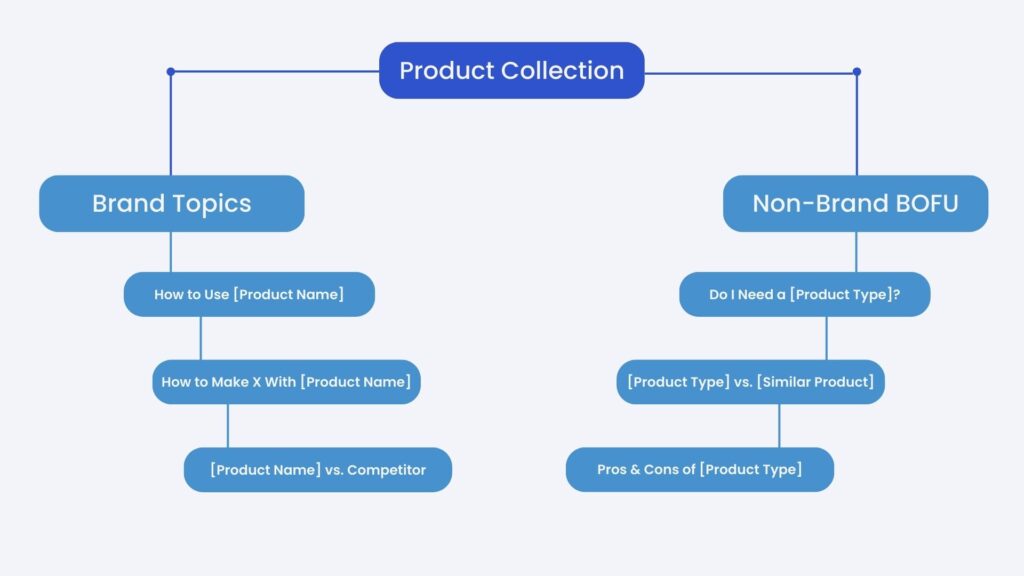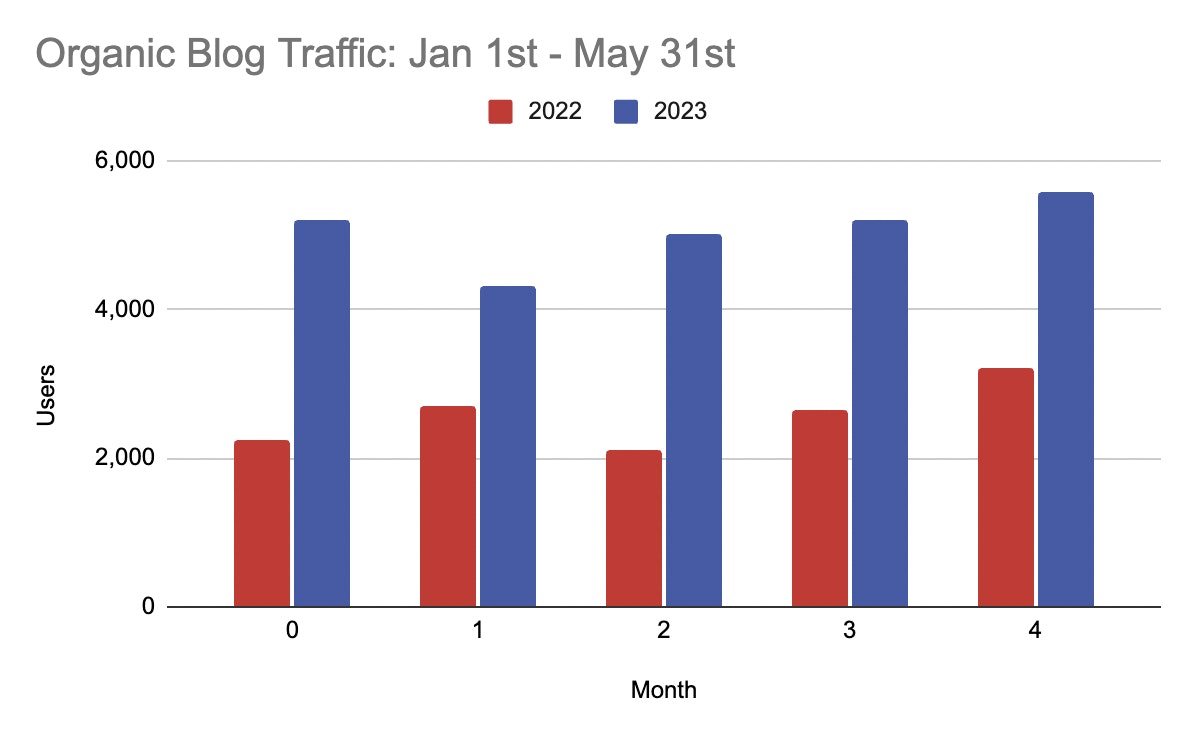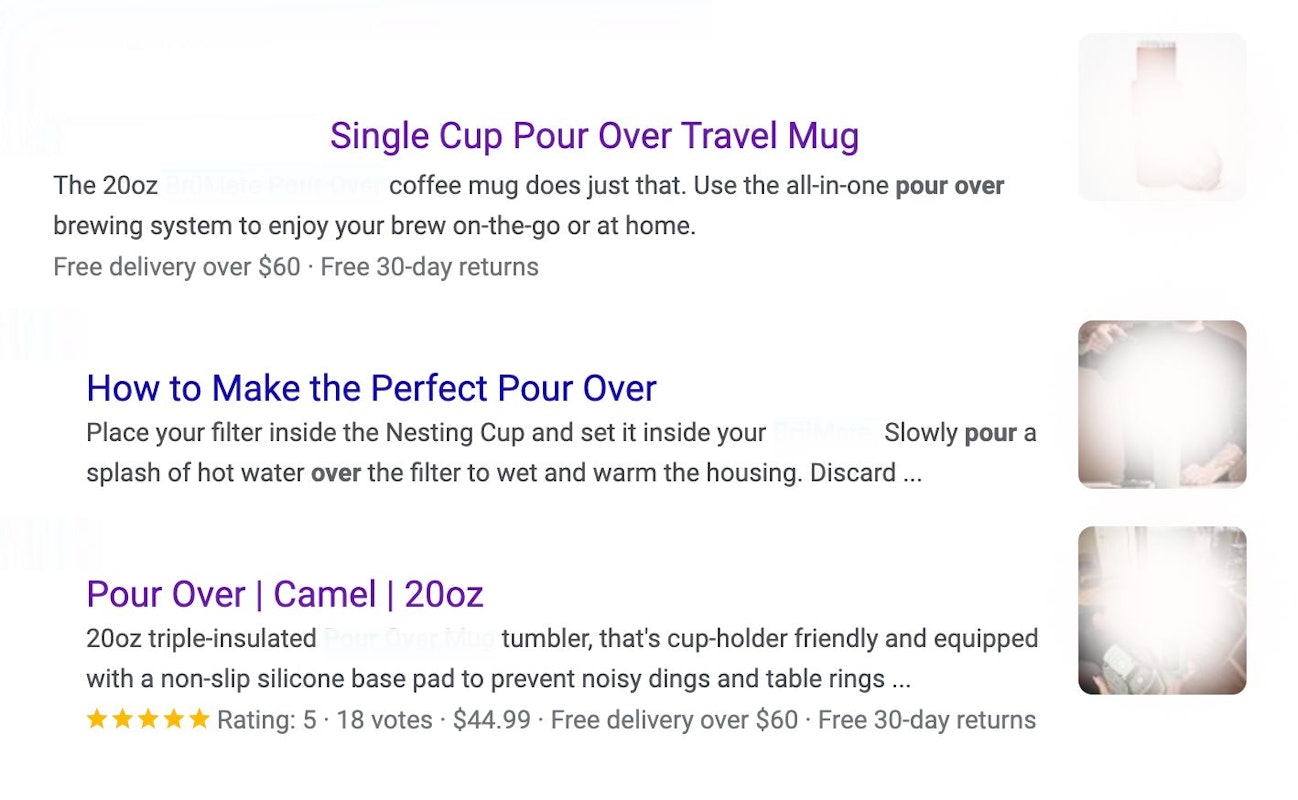Table of Contents
As search results pages add new features by the minute, it's time to start thinking about how we appear as opposed to just how we rank.
For competitive search spaces, surface area can often be more impactful than a single ranking improvement. We've seen it with the wall paper effect, after all!
Allow me to introduce Brand Indent Boosting (BiB). It's the practice of leveraging blog content to increase your site's organic surface area, CTR, and traffic with indented brand search results.
In this article, you'll learn how to improve your site's visibility using BiB. Throughout, I'll share how an Ecommerce client drove 97% Y/Y organic blog traffic growth by making this tactic a priority.
Myths Associated With Brand Indent Boosting (BiB)
There are a good number of myths in search marketing, many of which we could dive into in several more articles. Here are a few that are associated with BiB.
"You Can't Impact Indented Results"
Indented results have slowly become one of my favorite Google features. They're great for increasing a brand's surface area in search results. And, if you have a good topic cluster strategy, you can increase your visibility in a lot of different areas across the organic space.
While they are essentially an automated Google feature, there are strategies you can use to increase the likelihood of Google using your pages in indented results. You can do this to improve either brand or non-brand visibility. More on that later!
"Targeting Branded Keywords Won't Grow Your Organic Audience"
Okay, I'm not saying that you should scrap your non-brand strategy altogether. Non-brand is an essential part of how we bring new audience groups to sites in both SEO and SEM.
But as organic search results become increasingly competitive by the minute, your branded search presence should not be ignored. In fact, a branded content strategy can be the perfect asset to have in your search marketing tool belt when you're ready to build a dominant organic presence.
This, of course, will be dependent on several different factors. For the case study I walk through in this article, it was the perfect solution. The company's industry has a low barrier to entry, placing a high barrier to entry in the organic market. The brand also does a ton of great work on their other marketing channels and has fairly widespread brand awareness because of it.
"SEO and Brand Teams Don't Mix"
BiB requires you to have a relationship with your brand team. Some SEOs may see this as a red flag. You may be thinking, "But Skye! My brand team tries to write articles on 'Lululemon legging dupes' even though we're a kombucha company!"
And in some cases, you may be right. Search intent isn't going to be at the top of everyone's minds.
But the one thing SEO and brand have in common? We both want to create content that is useful to our audience. If you can develop a partnership mindset with your company's brand and marketing teams, you'll be able to take your content strategies to the next level.

How to Execute Brand Indent Boosting: A Case Study
Using a combination of all the facts above, here's how you can use BiB to boost your own indented results and traffic.
1. Create Topic Clusters Around Top-Performing PDPs
I started to create my year-over-year recap deck for my client, and I noticed that bottom-funnel blog content was consistently ranking quickly and converting.
Before this year, our content strategy was mainly mid- to top-funnel. Our topics ranged from "Gifts for Outdoorsmen" to "How to Throw a Backyard BBQ Party." Their products were loosely tied in throughout the articles. Some drove traffic, while others were a slow burn.
I decided to pivot. I wanted to be more intentional with how we were driving visibility to their products. Since their market is highly competitive, it was important for me to ensure that we were talking about their products as much as possible and how they're different from the competition.
I created content pillars based on their top product collections. Then, I created topic groups under these pillars with a variety of lower-volume, product-specific keywords.
2. Sync Up With Brand Team & Product Launches
Initially, my topic pillars were strictly non-brand. But as I started to have more conversations with my client's brand team, we found an opportunity to lean into branded search.
For context, this client creates unique insulated drinkware, designed for niche beverages like pour over coffee, infused waters, and more. Many of their product lines in the past have gone viral on social media platforms. Because of their popularity, their traffic is heavily branded.
My client's brand team wanted to start publishing articles that coincided with new product launches. These articles would act as recyclable assets to share across email and socials.
This was music to my ears. I love when everyone is on the same page about how content strategies go beyond search marketing. The only road bump? We had to come up with zero-volume "keywords" to target before the product launched.
3. Create Content Answering the Most Relevant Questions
Because keyword research tools were more or less off the table, we had to ask ourselves the question: what are people going to be asking about this product once they see the promotions?
One of our first tests with this strategy was on their most technical product to date; an insulated mug with a built-in mechanism for brewing pour over coffee.
The conclusion was that "How To Use [Product Name]" topics were the most relevant for the more technical product launches. We developed a blog post with a step-by-step process of how to use the pour over mug, along with where to bring it, and FAQs.
Here's an example of how a collection pillar looked like when splitting topics between brand and non-brand:

4. Publish Related Non-Brand Content
To stay on track with our non-brand topic clusters, we created non-brand content around the new product launch as well. For the new coffee mug, we created content on popular coffee brewing methods and how to make pour over coffee at home.
Following this strategy, we had at least two blogs planned for each product launch. One that was a branded article, discussing how to use the product itself. The other was a non-brand article about a related topic to the beverage the product carried.
The Results
Blog Traffic Increased by 97% Y/Y To-Date
By pivoting to a bottom-funnel strategy and placing emphasis on new product launches, blog traffic more than doubled Y/Y.
Our bottom-funnel posts, including the new product launch guides, became some of our highest-converting articles. We've seen an 11% increase in organic blog revenue during the same time frame.

Increased Surface Area in Brand Search Results
When we began using blog content as a tool for new product launches, we started seeing more instances of indented results. Today, our "how to" blogs are being pulled into indented results with product and collection pages. Alternatively, product listings appear indented below our blog articles for several relevant keywords.
In a rapidly changing search environment, we're taking up more space. We're providing people with more resources to make a buying decision. And, we're answering their questions before they can even lift a finger to ask Google another question.

Shareable Resources for Marketing Channels
With BiB, our content strategy became effortlessly linked with the client's brand strategy. Because we pivoted to product-focused, bottom-funnel content, we were able to create more value across multiple channels.
Give Yourself a Boost With BiB 🚀
In a world where search is ever-changing, it's time to get creative with how you show up in search results. Want to learn more about Ecommerce search tactics that work? Shoot us a message!

